In years gone by, Maurice Richard and other Montreal Canadiens hockey players enjoyed playing rounds of golf at the Marlborough Golf and Country Club in Cartierville
Updates: On Jan. 23, 2024, Klaas Vander Baaren mentioned by email that it wasn’t just Montreal Canadiens players who played golf at Marlborough; in an email (which Klaas has given me permission to post) he wrote:
It wasn’t only the Canadians hockey players who played at Marlborough G&CC. I caddied for Milt Schmidt, coach of the Boston Bruins, among others. The club welcomed all NHL folks and most of them used caddies.
This is really interesting to know. Such details about the course are of tremendous value.
As well, subsequent post is entitled:
*
I grew up in Montreal, but it’s been a long time since the year of 1974, when I lived there for a year, after moving back to Montreal from Vancouver.
I had previously lived in Montreal, starting in 1951, until I moved to British Columbia in the late 1960s to study at Simon Fraser University.
In 1974, I lived in Montreal for a year. The next year, in 1975, I moved to Toronto, and in 2018, I moved with my wife and daughter to Stratford.
My connection to Montreal is now mainly through stories that I share with fellow students who lived in Cartierville and Saraguay and thereabouts in the 1950s and 1960s.
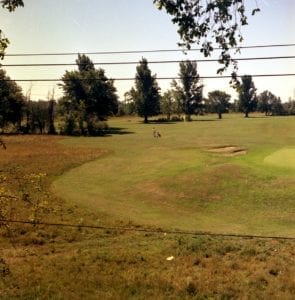
This photo, notes Klaas Vander Baaren, “shows a caddy playing early. Caddies were allowed to play the women’s course at times. Walking from ladies 5th green to ladies 6th tee. The left side of the 6th fairway are the train tracks.” Photo is from a previous post. Source: Klaas Vander Baaren.
I was interested to learn some years ago – from visitors to this website – that several Montreal Canadiens hockey players including Maurice Richard and Henri Richard used to play golf at the Marlborough Golf and Country Club in Cartierville.
I’ve shared stories about such connections, between the hockey players and the Marlborough course, at previous posts.
More recently, Bob Carswell of Toronto has shared with me reminiscences about how, in Bob’s recollection as a very young child, the Richard brothers would spend time teaching local children how to handle a hockey stick, during the winter in the late 1940s at a skating rink at a quarry in Cartierville. I will share Bob’s recollections in a subsequent post. I was going to devote the current post to such recollections but as things have turned out, setting the scene for Bob’s stories has become the focus of the current post.

Bob Carswell at Birds and Beans Cafe in Mimico in southern Etobicoke close to Lake Ontario, where he met with Peter Mearns and Jaan Pill in February 2015. In the photo, Bob is listening to the MCHS school song on Jaan’s iPhone. Jaan Pill photo
From site visitors, I have learned many things about the Marlborough golf course that I otherwise would not have learned. My own connection is that I attended Cartierville School which was near the Marlborough course. As well, on occasion, I worked at the course as a caddy. Other people were regular caddies but I lived some ways to the east and only turned up once in a while.
Click here for previous posts about Maurice Richard >
Click here for previous posts about the Marlborough Golf Club >
Click here for previous posts about Cartierville School >

From a previous post: Cartierville School, May 2015. Scott Munro photo
There is tremendous value in reliving the past, in the present
There is tremendous value in reliving our connection to positive aspects of the past. Research indicates that such a reliving significantly benefits our health and well-being. I have underlined this point in previous posts including one entitled:

May 2015 photo of Church of Good Shepherd, across the street from Cartierville School. Scott Munro photo
An excerpt from the latter post reads:
Drawing on landmark work in the field and her own body of colorful and highly original experiments – including the first detailed discussion of her “counterclockwise” study, in which elderly men lived for a week as though it was 1959 and showed dramatic improvements in their hearing, memory, dexterity, appetite, and general well-being – [Ellen] Langer shows that the magic of rejuvenation and ongoing good health lies in being aware of the ways we mindlessly react to social and cultural cues.

I was born in Sweden after the Second World War. The photo shows the boat on which my father and grandfather and other refugees sailed, under perilous conditions, across the Baltic Sea from Estonia to Sweden in September 1944. Other family members travelled to Sweden on a larger vessel. Source: Jaan Pill
A key point worth underlining, with regard to the latter excerpt, is that we have a choice, regarding how we respond to social and cultural cues.
My own awareness – regarding the fact we have a choice regarding such cues – dates back to my early childhood beginning with my primary classes at Van Horne School somewhere in or near the Snowdon neighbourhood in Montreal.
In those years, we lived in a low-rise apartment building, situated along with other low-rise apartment building along a long, relatively steep hillside roadway (at that time called Ridgevale, if I recall correctly). The apartment was where we first lived in Canada, before we moved to a house in Cartierville.
Picnics with high school friends in Ontario, along with comments at this website from contemporaries from the 1950s and 1960s, help me in my own project of deriving enjoyment and benefit from reliving the past – from picturing my life, with a focus on the positive aspects of my circumstances, in my childhood years. As Ellen Langer’s above-noted research indicates, revisiting those years adds immeasurably to a person’s well-being.
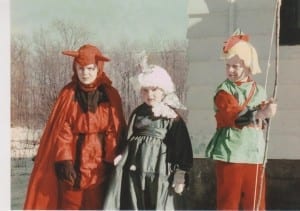
Jim Carswell, Lesley Carswell, and Bob Carswell, about 1953, at Cartierville School annual carnival. Source: Bob Carswell
The Forum Riot, March 17, 1955
When I first began teaching Grade 4 at Munden Park Public School in Mississauga in the late 1990s, teachers who had previously taught Grade 4 told me that of all the elementary years, students tend to remember most vividly the experiences they encountered in Grade 4.

One of several dance performances at 50th Anniversary event at Munden Park Public School in Mississauga, June 15, 2019. Jaan Pill photo
It’s an important transition point for many students. When a student arrives in Grade 4, teachers explained to me, they still tend to have a characteristic level of unquestioned respect for teachers, and for the school system, that tends to be typical of many primary students.
By the end of that school year, however, as they proceed through an interesting and noteworthy stage of maturation, they tend to start to develop some of the cynicism and worldliness – a characteristic and healthy questioning of authority, I would say – which becomes apparent in the years that follow.
At that point of transition, a student will in many cases start to develop their own, unique view of how things work in the world, based on what they have been observing as the years come and go.
The Rocket: A Cultural History of Maurice Richard (2009)
A March 17, 2015 CBC article is entitled: “Remembering the Richard Riot in song: Bob Hill wrote a song about Maurice Richard the night of the riot that became a smash.”
An excerpt reads:
Bob Hill was a popular musician and radio personality in Montreal in those days, and the night of the riot – March 17, 1955 – he wrote and recorded a song about Maurice Richard that became a smash, “The Saga of Rocket Richard”.
An excerpt (p. 131) from The Rocket: A Cultural History of Maurice Richard (2009) highlights key lyrics from Bob Hill’s song about the Forum Riot, which I first heard about the morning after the riot, when fellow students at Cartierville School were excitedly talking about the events of the previous night. I am guessing that people who had not been at the Forum that night would have heard about the riot from news reports on the radio – or in the morning newspapers.
I was standing in the hallway, outside my Grade 4 classroom, when I began to picture, in my mind, all the events that had taken place just hours before. On the same night in question, Bob Hill wrote and recorded a brilliant song, which I have listened to once again today, as I’ve been working on this post.
I had known Bob Hill from the days in the 1960s when he was a highly regarded history teacher – also renowned for his impressive talent as a musician – at Malcolm Campbell High School in Cartierville. I knew Bob as a teacher and musician because he taught at the high school that I graduated from in 1963.
The song is delivered with verve and energy. Benoît Melançon (whose above-noted book I will now read from cover to cover, after reading just a few pages previously) shares some details:
For Bob Hill, the Rocket’s actions were justified in a different way. His song is far less repetitive than Thiffault’s – the former contains 134 words; the latter, 321 – allowing him to deliver a much more complex version of the event. The song’s narrator defines himself as a Canadian when he sings of “our national sport” and, in the same breath, as a Montrealer, when he sings about “our town” and “our Forum.” He reminds us of what had happened in Boston on March 13, by way of explanation of Richard’s behaviour:
One evening in Boston they struck at his head
And cut him right over the ear
With his temper so red, and the way that he bled
His thinking could not have been clear
In all the confusion before they subdued him
He’d struck an official, I hear.
Enter Clarence Campbell: “He [Richard] trod on the toe / Of Campbell, the man without fear”; his temerity would dearly cost the man who was “quite the cream of the Montreal team.”
Says Campbell, “Young man, that stick in your hand
Has put you in trouble, by gar
Though you needed five stitches, you’re too big for your britches
Just who do you think that you are?
Now you’ve done this before, and you’ve made me quite sore
And although you are a great star
You’re through for the year, do I make myself clear
Mister Maurice, ‘The Rocket’ Richard?”
Campbell’s condescension perhaps best explains the rioters’ call: “Off with the head / Of Campbell, the man without fear!”
Click here to listen to Bob Hill’s smash hit “The Saga of Rocket Richard” >
The lyrics have prompted me to renew my interest in the reading of poetry.
Henri Richard was posthumously diagnosed with chronic traumatic encephalopathy (CTE), a degenerative brain disease
I’ve been interested to learn some things, in preparing to write this post, about Henri Richard that I had previously not know about. Among other things, I have learned that he was posthumously diagnosed with chronic traumatic encephalopathy (CTE), a degenerative brain disease.
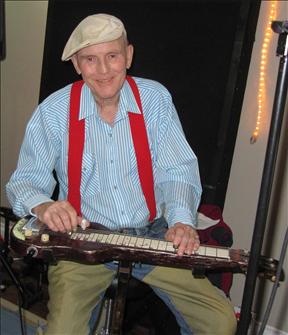
Bobby Hill playing lap steel while recording Echoes From the Wheel Club, 2010. Photo by Craig Morrison. Source: legacy.com Book of Condolences
I have begun organizing some information I’ve gathered recently about brain injuries in the NHL, NFL, and other professional leagues. I’ve learned the issue of life-altering (in some cases, life-ending) brain injuries also affects team sports in elementary school and high school – and in other venues where young people compete in team events.
I am aware of a number of cases where outstanding young football or rugby players have died suddenly – quite likely as a result of a series of concussions.
I have also been reading about brain injuries – associated with exposure to pressure waves from battlefield weapons including during training sessions – sustained by military personnel serving with military forces in the United States. A series of such articles have recently appeared in the New York Times.
With CTE, the brain ceases to work properly, and the person – that is, the person who previously has been capable of dealing with everyday life, with making good decisions, with adequately getting through the day and night, the person who was there before the disease took hold – starts to disappear. Once the disease has begun, there currently appears to be no way to stop its progress. In some cases, the brain injuries give rise to nonstop hallucinations – the person, in some cases, constantly sees demons.
Currently, the only way to diagnose the disease is through posthumous analysis of brain tissue. One of the situations I have read about concerns a hockey player who committed suicide – and was initially misdiagnosed by a physician in Toronto connected to the NHL.
A posthumous diagnosis by the Toronto physician in question concluded from a study of brain tissue that the player in question had not had CTE. The NHL made a point of widely publicizing the physician’s conclusion.
The player’s widow, however, suspicious of the diagnosis, asked for a second opinion in the United States. The second diagnosis (and a third one, just to be sure) concluded that the correct diagnosis was indeed CTE.
A Nov. 30, 2018 New York Times article highlights the latter story.
The article is entitled: “Doctors Said Hockey Enforcer Todd Ewen Did Not Have C.T.E. But He Did: A new analysis of Ewen’s brain tissue confirms he had the degenerative brain disease, despite what a Canadian doctor initially found. That doctor went on to work for the N.H.L.”
Still another story concerns a panel of researchers, apparently closely connected to the NHL, who have claimed that evidence is lacking that would directly connect CTE to repeated hits to the heads of hockey players.
Other researchers, not connected to the NHL, have shared conclusions indicating there is strong and extensive evidence of a connection between repeated hits to the head and CTE. To date, as I understand, the leadership of the NHL has continued to insist that no such link exists.
Ken Dryden has explored the relation between hits to the head and brain damage in Game Change: The Life and Death of Steve Montador and the Future of Hockey (2017). He has also recommended changes in NHL rules that would enable the game to thrive even in the absence of hits to the head.
For the current post, I will share a few links to articles dealing with this topic specifically as it relates to hockey.
Forbes
A May 6, 2020 Forbes article is entitled: “In Henri Richard, Hockey Lost The Most Glorious Chapter Of Its Past.”
The article notes that “Henri had his personal memories of so many historic moments and legendary figures erased by his condition in later life. Yet even in seclusion and now death, his legend endures in hockey lore, especially in the form of his likely never to be broken record of 11 championships.”
The Athletic
A Match 6, 2020 Athletic article is entitled: “Henri Richard’s unique greatness should inspire the team he loved so deeply.”
An excerpt reads:
But Henri Richard was a special kind of Canadiens legend. He was never considered the best player on his own team, let alone the whole league, because of how great his teams were. He never won a major individual NHL award until winning the Bill Masterton Trophy, recognizing perseverance, sportsmanship and dedication to hockey, at age 37, the year before he retired. He never registered more than 30 goals or 80 points in any given season.
No, Henri Richard’s legend was tied to team success and, most importantly, his integral role in making those teams winning teams. He is the Canadiens’ all-time leader in games played. He scored two Stanley Cup-clinching goals. And he has his name on the Stanley Cup as a player 11 times, a record that will never come close to being broken.
City News
A June 14, 2023 CityNews article is entitled: “Canadiens legend Henri Richard had CTE at time of death: study.”
An excerpt reads:
The NHL, which made helmets mandatory in 1979, has consistently denied a link between hockey and CTE.
Boston University researchers have previously found that each additional year of playing hockey may increase a person’s odds of developing CTE by about 23 per cent.
“Like Stan Mikita and Ralph Backstrom, he was a great skater, and physical, but he had a playmaker’s mind, and played that way. But all those hits to the head,” said fellow Canadiens great Ken Dryden, a former teammate of Henri Richard’s in Montreal.
“We have to understand, whatever the sport, a hit to the head is not a good thing.”
Henri Richard was diagnosed with stage 3 CTE by Dr. Stephen Saikali at the Laval University in Quebec City.
The Gazette
A June 19, 2023 Gazette article is entitled: “Hickey: Habs legend Henri Richard’s CTE highlights risk of head injuries in hockey: There is a growing awareness of the degenerative brain disease and one expert says it’s important to educate parents, coaches and young athletes.”
An excerpt reads:
Richard was a skilled offensive player, not the type normally associated with CTE, but Carbonneau noted Richard and Stan Mikita, another Hall of Famer diagnosed with CTE, both played without helmets.
There has been a growing awareness of CTE, a degenerative brain disease, over the past decade with much of the attention focused on former National Football League players who went helmet-to-helmet in the trenches.
But Tim Fleiszer, the executive director of CLF Canada, said it’s important to educate parents, coaches and young athletes.
“There has been an emphasis on football, but any time there is repeated trauma to the head, from hits in hockey, heading the ball in soccer, tackling in football and rugby, there is the risk of brain injury,” said Fleiszer, who won the Grey Cup with four different teams. “Youngsters under 14 shouldn’t play contact sports and all athletes should recognize the symptoms of concussions and deal with them.”
As for hockey helmets, Fleiszer said they offer protection against fractured skulls, but do not prevent concussions. While noting Richard and Mikita played without helmets, most of the 16 hockey players with a diagnosis of CTE did wear helmets and they weren’t all grizzled veterans.
Ottawa Business Journal
A June 21, 2023 Ottawa Business Journal article is entitled: “Habs legend Ken Dryden: ‘Concussions and brain injuries are not death and taxes’: Concussion Legacy Foundation Canada, created by former CFL player, addresses brain injuries in athletes, military personnel and youth.”
An excerpt reads:
Scientists have done their part, said Dryden, referring to their findings that repeated head trauma is linked to the brain-withering disease known as chronic traumatic encephalopathy (CTE). Canadiens legend Henri Richard, who passed away in 2020 at age 84, was posthumously diagnosed with CTE, his family publicly shared last week.
In his remarks, Dryden called for action from decision-makers in the areas of sports, government and business.
New York Times
A Sept. 22, 2023 New York Times article is entitled: “A Former Hockey Enforcer Searches for Answers on C.T.E. Before It’s Too Late: Chris Nilan fought more than 300 times during a pro hockey career, then had years of addiction and anger problems. A high-risk candidate for chronic traumatic encephalopathy, Nilan is being studied by Boston University.”
An excerpt (I have omitted some embedded links) reads:
Ten years ago, there might have been more concern. Nilan’s past substance abuse and outbursts of rage mirror some of the behavior exhibited by other hockey enforcers following retirement, players like Bob Probert, Derek Boogaard, Wade Belak, Todd Ewen and Steve Montador. All of them were diagnosed with C.T.E., which can only be detected after death.
More than a dozen hockey players have been diagnosed with C.T.E., and not all of them fighters. The most recent was Henri Richard, a small, skillful center for the Canadiens who died in 2020, the kind of player Nilan was paid to protect.
CBC video clip, Jan. 20, 2024: “Jennifer Botterill calls out hockey’s ‘archaic’ revenge culture”
A Jan. 20, 2024 CBC video clip highlights a conceptual framework, inside of which aspects of professional hockey can be situated. I had been thinking of this framework when I wrote the current post. The video clip, entitled: “Jennifer Botterill calls out hockey’s ‘archaic’ revenge culture,” prompts me to give the matter further thought. A description of the CBC clip reads:
Jennifer Botterill caused a dust-up in the hockey world when she challenged her co-commentator’s views on the game’s revenge culture live on television. The hockey analyst talked to The National’s Ian Hanomansing about the reaction to viral discussion and what it’s like to shake up norms in the male-dominated sport.


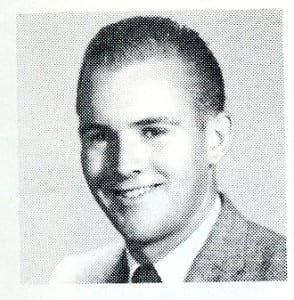
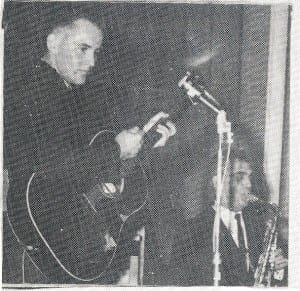
In this post I’ve mentioned the value of reliving positive experiences from years gone by.
I can add that I recently came across, in my files, an April 23, 2022 New York Times article entitled: “Exploring the Health Effects of Ageism: Through more than three decades of research, the Yale psychologist Becca Levy has demonstrated that age discrimination can take years off oneʼs life.”
An excerpt (I’ve added links to the three books that are mentioned) reads:
A psychologist and epidemiologist, Dr. Levy has demonstrated — in more than 140 published articles over 30 years and in a new book, “Breaking the Age Code” — that ageism results in more than hurt feelings or even discriminatory behavior. It affects physical and cognitive health and well-being in measurable ways and can take years off one’s life.
“Just as we have learned in recent decades that structures are biased against women and people of color, leading to worsened health outcomes, she has shown that negative feelings about old age lead to bad outcomes in older people,” said Dr. Louise Aronson, a geriatrician at the University of California, San Francisco, and author of the best-selling book “Elderhood.”
Another memento in Dr. Levy’s office is a card on her bulletin board that reads, “Ask Me About 7.5.” The souvenir came from a Wisconsin anti-ageism campaign and refers to her 2002 longevity study, which for two decades followed hundreds of residents older than 50 in a small Ohio town. The study found that median survival was seven and a half years longer for those with the most positive beliefs about aging, compared with those having the most negative attitudes.
“I use that in practically every talk I give because it’s shocking,” said Tracey Gendron, who chairs the gerontology department at Virginia Commonwealth University and credits Dr. Levy’s work in “Ageism Unmasked,” her own recent book. “She’s truly been a pioneer.”
A Feb. 2, 2024 CBC article is entitled: “NHL commissioner says it’s not ‘necessary’ to suspend NHL players charged with sexual assault: Bettman confirms NHL players charged with sexual assault are continuing to receive pay.”
An excerpt reads:
The settlement shook the sports world and parents were outraged to learn that their registration fees paid for the settlement without their knowledge, along with other settlements over the years tied to sexual abuse allegations that were worth millions of dollars.
London Police are scheduled to hold a press conference on Monday about the investigation they initially closed in 2019 without charges, only to re-open it in 2022 following a public outcry.